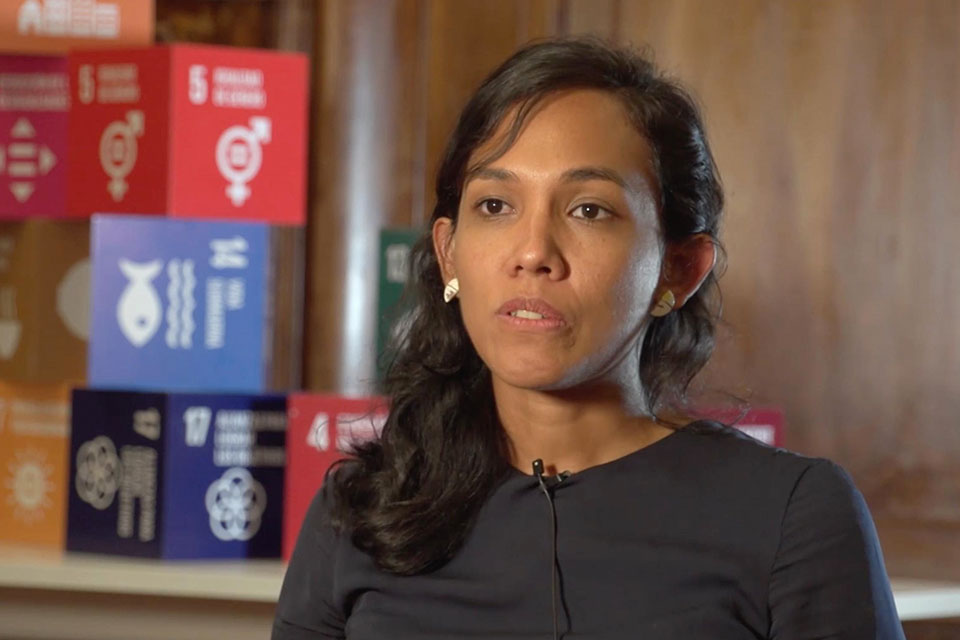Take Five: A decade of making public spaces safe for women and girls
Date:

Lizzette Soria works as policy specialist for UN Women’s flagship initiative Safe Cities and Safe Public Spaces. The initiative was launched in 2010 with local and national governments, grassroots women and girls, women’s rights organizations and other civil society groups, UN agencies, and other partners in five cities: Quito (Ecuador), Port Moresby (Papua New Guinea), Kigali (Rwanda), Cairo (Egypt), and Delhi (India). The initiative aims to develop and implement evidence-based and comprehensive approaches to prevent and respond to sexual harassment against women and girls in public spaces.Today, nearly 50 cities, including cities in the Global South and North, are part of the initiative.
What are some of the key achievements of Safe Cities and Safe Public Spaces in the past 9 years?
Today we have more local data, and we better understand the nature of sexual harassment in the public space. When we started 10 years ago there was some data, but it was very scattered. Through this programme, we have gathered a lot of data, and now we have more evidence. However, we still need to go deeper to understand the needs of different groups of women.
Another accomplishment from this initiative has been the global response. Now sexual harassment is part of public policy. Before, this type of violence was often normalized, and it was purely addressed from a security perspective. Women themselves have advocated for sexual harassment to be understood as a public policy issue.
What are some additional needs that the programme will address in the coming years?
Now we may have more data, but we need impact evaluations that produce rigorous evidence that allows us to assess what works and what doesn't. In 2019, we held the second impact evaluation; the first evaluation was Quito and the next one will be in Port Moresby in Papua New Guinea.
Additionally, we need more gender-focused budgets. It is important for all these initiatives and programmes to be financed by local and national governments. This is a big challenge that needs more and different investors at a global level.
What are some of the challenges that you see going forward, and what are the areas for prioritizing action to address sexual harassment in public spaces?
We need to invest our efforts in men and boys. This is something we have worked on, but we need to do more and learn how to work hand-in-hand with men and boys.
We always talk about percentages of women that have been subjected to some form of sexual harassment, but we need to also speak out on the number of men that have been perpetrators in these situations. It is evident that the existing power inequality is, at the end of the day, the cause of sexual harassment. Therefore, we have to work with men and boys and work on positive masculinity.
There is also the challenge of implementing all these normative programmes and approaches.
Has the programme had specific successes that you can share, and cities that are leading the way forward for making public spaces safe for women and girls?
Programme partners, with the technical support of UN Women have been successful in supporting the development of different legislative and policy frameworks in many cities that the programme is active in, which enable us to better understand, prevent and respond to sexual harassment in public spaces. Some frameworks adopt an approach where women’s safety and the prevention of sexual harassment in public spaces is integrated in different departments (such as housing, transportation, infrastructure and planning), others apply a more local approach (for instance, local ordinance on sexual harassment in Quezon and Quito), or at a national level (Egypt).
But as for other forms of violence against women, the real challenge is the implementation of laws and policies, because policies would need to be backed by budgets and attitudes and behaviours of people need to change. We are now learning from cities like Quito, Guatemala City, Montevideo or Santiago, which are cities that already have a framework and have had the chance to implement it.
What do you think can be a game-changer when it comes to ending violence against women in public spaces?
A fundamental change, where there is hope—because we have seen it work already—is the global cultural shift. Our comprehensive programmes are being implemented over 5 years, but really this cultural change needs to be sustained over a longer period of time, irrespective of governance changes. This means that if there is a change of government, it is vital that this work continues, precisely because it requires time.
Sustaining the cultural change is key in the next decades, especially now with the #MeToo and #NiUnaMenos movements. There is hope because this change is already on the table, it is already working, and conversations are being had. These conversations have the power to change behaviours over time.